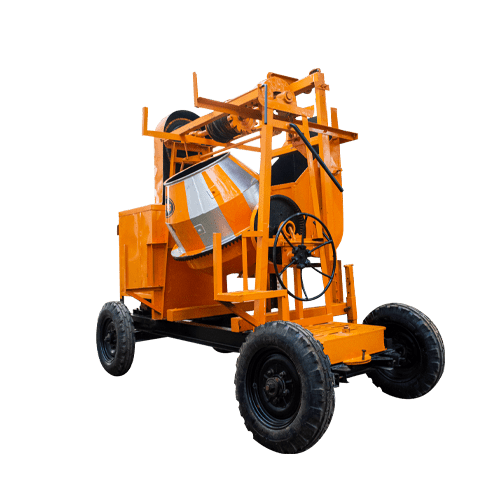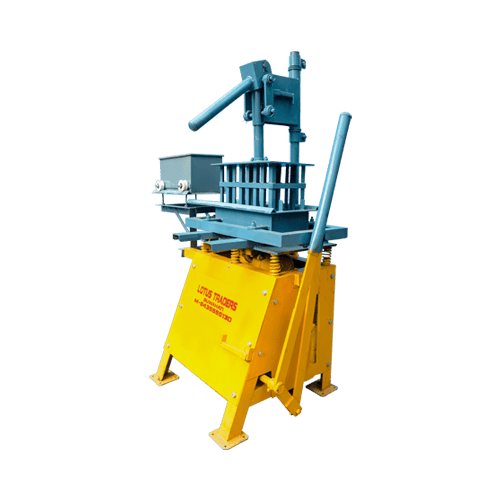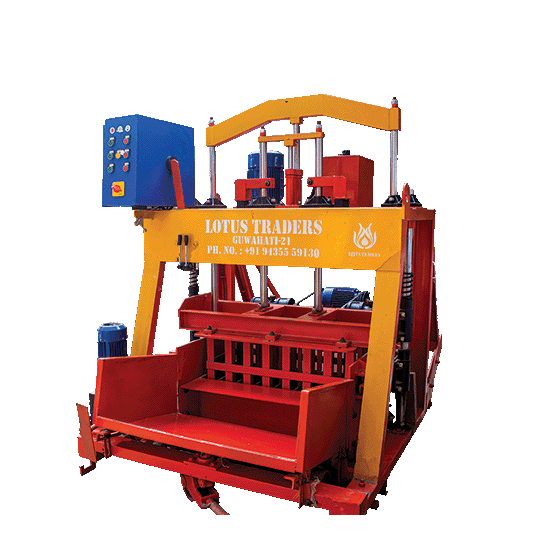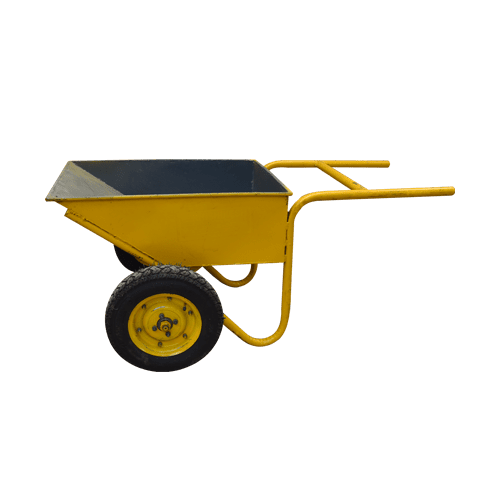8 Cavity Fully Automatic Brick Making Machine

8 Cavity Fully Automatic Brick Making Machine in india
- High quality materials
- Compliance with Standards
- Clear Product Information
- Warranty & Support
- Product Testing & Certification
- Delivery & Policy
- Ask a Question
- Estimated Delivery: 5 Days – 10 Days
- DESCRIPTION
FEATURE | SPECIFICATION |
Production Capacity | 1440 Blocks per hour / 1800 Bricks per hour |
Cavity | Block 8 / Bricks 10 |
Block Type | Solid, I shape, Zigzag |
Method | Hydraulic Pressure |
Power Requirement (machine+mixer+conveyor) | 22 KW 440v |
Pressure | 3000 PSI |
Conveyor | 18ft |
Pan Mixer 2 Number | 380Kg Capacity |
Jack Size | 150 x 200 mm |
Cycle | 20 second |
Hydraulic Tank | 400 ltr |
Pan Mixer | 2 |
Machine | 1 |
Trolley | 2 number |
What is 8 Cavity Fully Automatic Brick Making Machine
A machine that can make 8 bricks or blocks at once is known as an automatic 8 cavity brick and block making machine. The raw materials are compressed into the desired shape by a completely automated process using hydraulic pressure. A PLC (programmable logic controller) which ensures that all of the components are operating precisely, often controls the machine.
The raw materials are loaded into the machine’s hopper. After being combined, the raw materials are subsequently transported to the molding box. The bricks or blocks are created in the mould box. The raw ingredients are then compressed by the machines hydraulic pressure on the moulding box. The machine ejects the bricks or blocks from the moulding box once they are finished being made.
A wide range of brick and block varieties including solid bricks, hollow bricks, paving blocks and interlocking blocks can be produced using the machine. The machines mould has an impact on the sort of brick or block that is created.
Large scale brick and block production facilities frequently employ automatic brick and block making machines with 8 cavities. They can generate thousands of bricks or blocks per hour and have a high manufacturing capacity.
Key features of 8 cavity Fully Automatic Brick Making Machine
The following are some of the features of an automatic brick and block making machine with 8 cavities:
High manufacturing rate: Automatic brick and block making machines with 8 cavities are capable of producing out a thousand bricks or blocks in an hour. They are therefore perfect for large scale manufacturing plants.
Constant customer satisfaction: Automatic brick and block manufacturers create bricks and blocks of the same size and caliber. This is so that the raw materials can be compressed into the desired shape by the machines hydraulic pressure.
Lower labour expenses: Operating automatic brick and block making machines with 8 cavity requires very little labour. This may assist brick and block makers in lowering labour expenses.
Enhanced Security: Safety elements are built into Automatic Brick and Block Making Machines with 8 cavity to help safeguard workers from harm. For instance, the machine might incorporate a guard to stop workers hands from being stuck in the moving parts.
PLC Surveillance: A PLC (programmable logic controller) which assures the precise operation of all the components that often controls the machine.
Interface designed with a touchscreen: The machine might feature a touchscreen interface that makes it simple to use and maintain.
Automated Feeding Technology: The device has the potential to be installed with an automatic feeding technology (to provide a steady supply of raw materials).
Automated Extraction Technology: The machinery is connected with an automatic extraction technology (that takes the produced bricks or blocks out of the moulding box).
Uses of Automatic brick and block making machine 8 cavity
There are many uses for automatic brick and block makers with eight cavities including:
Construction: To make bricks and blocks for construction projects, automatic brick and block making machine with 8 cavities are employed. These bricks and blocks can be used to make walls, foundations and other buildings.
Paving: Paving blocks for sidewalks, driveways and other paved surfaces are made using automatic brick and block making machines with 8 cavities
Landscaping: To create landscape blocks for retaining walls, garden borders and other landscaping elements automatic brick and block making machines with 8 cavities are employed.
Interlocking blocks: Interlocking blocks for patios, walkways and other surfaces are made using automatic brick and block making machines with 8 cavity.
Building a new housing complex: To create the bricks and blocks required to construct a new housing development a brick and block factory utilizes an automatic brick and block making machine with 8 cavities.
Paving a new sidewalk: A contractor produces the paving blocks required to build a new sidewalk using an automatic brick and block making machines with 8 cavity.
Retaining wall construction: The landscape bricks required to construct a retaining wall are created by a homeowner using an automatic brick and block making machine with 8 cavity.
Benefits of Automatic brick and block making machine 8 cavity
The following are some benefits of employing an automatic brick and block making with 8 cavities:
Enhanced output: Automatic brick and block making machines with 8 cavities can generating out tens of thousands of bricks or blocks every hour. They are perfect for large scale production facilities because this is much more than what can be produced manually.
Enhanced product quality: Automatic brick and block makers create bricks and blocks with uniform dimensions and high-quality materials. This is so that the raw materials can be compressed into the desired shape by the machine’s hydraulic pressure. As a result sturdy, long lasting, consistent bricks and blocks are produced.
Lower labour expenses: Operating automatic brick and block making machine with 8 cavity requires very little labour. This may assist brick and block makers in lowering labour expenses.
Enhanced Security: Safety elements are built into Automatic Brick and Block Making Machines with 8 cavity to help safeguard workers from harm. For instance, the machine might incorporate a guard to stop workers hands from being stuck in the moving parts.
Reducing wastage: Automatic brick and block making machines with 8 cavity are highly effective and generate very little waste. This may lessen the manufacturing of bricks and blocks adverse environmental effects.
Increase in profitability: Automatic brick and block making machine with 8 cavities can help brick and block producers become more profitable (by increasing manufacturing capability, enhancing product quality, lowering expenses for labour and enhancing security).
Here are some particular instances of the advantages that automatic brick and block making machines with 8 cavities have provided brick and block manufacturers:
After putting in an automatic brick and block maker with 8 cavity, a brick and block company was able to treble its output.
A brick and block firm that installed an autonomous brick and block making machine with 8 cavity was able to cut its labour costs by 20%.
A brick and block maker installed an autonomous brick and block making machine with 8 cavity which allowed it to increase the quality of its goods by 15%.
How the machine works?
An automatic brick and block making machine with 8 cavities works by following these steps:
The machines hopper receives the raw ingredients as they are fed.
After being mixed, the raw components are transported to the mould box.
In the mould box, bricks or blocks are created.
The raw ingredients are then compressed by hydraulic pressure applied by the machine to the mould box.
Once produced, the machine evacuates the bricks or blocks from the mould box.
Typically, a PLC (programmable logic controller) that assures the perfect operation of all the parts controls the machine.
Here is a more detailed explanation of each step:
Feeding: The raw ingredients are put into the machines hopper. The hopper is a sizable container with a huge capacity to store raw materials. Usually a conveyor belt is used to feed the raw materials into the hopper.
To Mix and Convey: After the raw ingredients are placed in the hopper, they are mixed and delivered to the mould box. The mixing procedure guarantees that the raw components are mixed equally. The raw materials are transported from the hopper to the mould box via the conveying process.
Moulding: Bricks or blocks are created in the mould box. Each cavity in the mould box is the shape of the desired brick or block. To compress the raw materials into the desired shape, the machine exerts hydraulic pressure to the mould box.
Elimination: After the bricks or blocks are created the mould box is removed by the machine. The ejection procedure makes sure that the blocks or bricks are taken out of the mould box without causing any damage to them.
An automated brick and block machine with 8 cavities is an advanced apparatus intended to effectively manufacture bricks and blocks. By automating several steps in the manufacturing process including as material feeding, mixing, compaction and moulding, this machine simplifies the work flow. It can concurrently make eight bricks or blocks thanks to its 8 cavities which greatly boosts manufacturing rates. With the help of this technology and building materials may be produced quickly in huge quantities and with improved size and quality uniformity and reduced manual labour. In order to meet the increasing demand for bricks and blocks while preserving efficiency and consistency and it is frequently utilized in the building industry.
An advanced manufacturing solution for effectively creating bricks and blocks is an automatic brick and block making machine with 8 cavities. With the capacity to produce a huge number of bricks or blocks at once this machine fully automates the production process from material input to moulding. It dramatically boosts production rates, guarantees constant product quality and lowers labour costs by automating material feeding, mixing, compaction and moulding. With its ability to produce high quality building materials efficiently and effectively this technology is revolutionizing the construction sector and is a priceless asset in addressing the growing need for such materials.

Concrete Mixer Machine With Lift

Manual 4 Cavity Brick Machine

Egg Laying Type Block Making Machine

Double Wheel Trolley

Needle Vibrator


